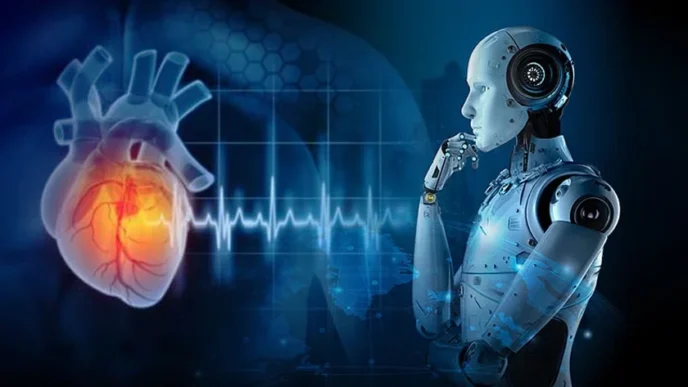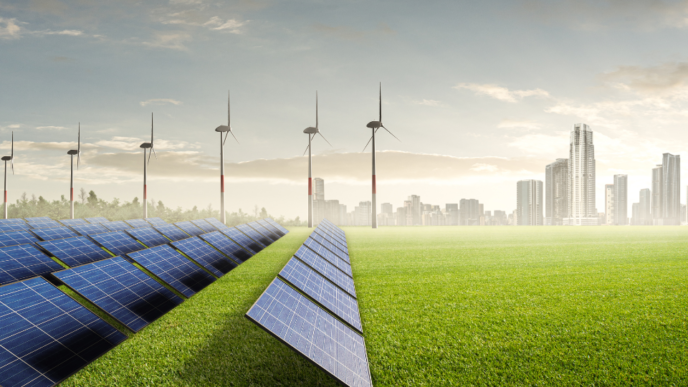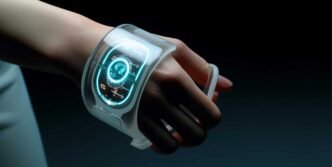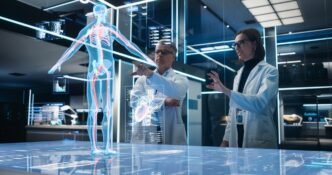Introduction
The field of robotics stands at a fascinating crossroads. What began as industrial automation has evolved into a multidisciplinary domain that combines artificial intelligence, materials science, biomechanics, and human-computer interaction. As we look toward the horizon, new pathways are emerging that promise to revolutionize how robots function in our world and interact with humans. This blog explores these exciting new directions and their potential impact on society, industry, and our daily lives.
AI-Driven Autonomy: Beyond Programmed Responses
Traditionally, robots operated within strictly defined parameters, executing pre-programmed commands with precision but little adaptability. Today, the integration of advanced AI systems is creating robots capable of learning from their environments, making decisions based on complex inputs, and improving their performance over time.
Deep reinforcement learning has been particularly transformative, allowing robots to master tasks through trial and error rather than explicit programming. This approach has enabled breakthroughs in robotic manipulation, navigation in unstructured environments, and adaptive responses to unexpected situations.
The next frontier involves robots that can generalize their learning across different tasks and environments—a capability known as meta-learning or “learning to learn.” This could dramatically reduce the time and data needed to deploy robots in new settings, making them more versatile and economically viable across industries.## Soft Robotics: Flexibility Meets Functionality
Inspired by biological systems, soft robotics represents a paradigm shift from rigid, metal-based designs to compliant, adaptable structures. Using materials like silicone, elastomers, and hydrogels, soft robots can bend, stretch, and conform to their surroundings in ways traditional robots cannot.
This flexibility offers several advantages:
– **Enhanced safety**: Soft robots can work alongside humans with reduced risk of injury
– **Improved adaptability**: They can navigate complex, changing environments
– **New capabilities**: Tasks like grasping delicate objects become possible
Recent innovations include pneumatically-actuated grippers that can handle everything from eggs to heavy tools, artificial muscles powered by electrical or chemical stimuli, and entirely soft autonomous robots that can crawl, swim, or jump without rigid components.
The integration of embedded sensors within soft materials is creating robots that can “feel” their surroundings, opening new possibilities for applications in healthcare, search and rescue, and environmental monitoring.## Human-Robot Collaboration: From Tools to Teammates
As robots move beyond isolated industrial settings into shared spaces, the nature of human-robot interaction is evolving from simple tool use to collaborative partnership. This shift requires advances in several areas:
– **Intuitive interfaces**: Natural language processing and gesture recognition allow humans to communicate with robots without specialized training
– **Social intelligence**: Robots that can read and respond to human emotional states and social cues
– **Shared autonomy**: Systems where humans and robots dynamically allocate tasks based on their respective strengths
Collaborative robots (cobots) are already working alongside humans in manufacturing, logistics, and healthcare. The next generation will feature enhanced perceptual abilities, allowing them to anticipate human needs and adapt their behavior accordingly.
Research in human-robot trust is particularly important, as successful collaboration depends on appropriate levels of trust—neither over-reliance nor excessive skepticism. This involves designing robots that communicate their capabilities and limitations clearly and behave in predictable ways while still maintaining flexibility.## Bioinspired and Biomimetic Approaches
Nature has spent billions of years evolving solutions to complex problems, and roboticists are increasingly looking to biological systems for inspiration. This approach has yielded remarkable innovations:
- **Legged locomotion**: Robots like Boston Dynamics’ Spot draw on animal gaits to navigate difficult terrain
- – **Swarm robotics**: Coordinated groups of simple robots that mimic the collective behavior of insects
- – **Biomimetic sensors**: Artificial whiskers, antennae, and compound eyes that provide unique sensing capabilities
Beyond mimicking physical structures, researchers are also implementing biological control principles. Central pattern generatorsu2014neural circuits that produce rhythmic outputs without sensory feedbacku2014have inspired robust locomotion controllers for legged robots. Similarly, predictive coding models based on how the brain processes sensory information are improving robots’ perceptual abilities.
The integration of living cells with robotic systems (biohybrid robotics) represents an emerging frontier, with potential applications ranging from environmental sensing to tissue engineering.## Ethical and Societal Considerations
As robots become more capable and integrated into society, important ethical questions arise:
– **Labor displacement**: How do we manage economic transitions as automation affects employment patterns?
– **Privacy and surveillance**: What limits should be placed on robots’ data collection capabilities?
– **Autonomy and responsibility**: Who is accountable when autonomous systems make decisions with harmful consequences?
– **Access and equity**: How do we ensure robotic technologies benefit society broadly rather than exacerbating existing inequalities?
Addressing these challenges requires collaboration between technologists, policymakers, ethicists, and the public. Frameworks for responsible innovation in robotics are emerging, emphasizing transparency, human oversight, and alignment with human values.## Conclusion
The future of robotics lies not in a single breakthrough but in the convergence of multiple pathways: more intelligent systems, more adaptable physical designs, more natural human-robot interactions, and more biologically-inspired approaches. Together, these developments are creating robots that can operate effectively in the messy, unpredictable world that humans inhabit.
As these technologies mature, they promise to address pressing challenges in healthcare, disaster response, sustainable agriculture, and environmental protection. However, realizing this potential requires thoughtful consideration of the societal implications and a commitment to developing robotics in service of human flourishing.
The most exciting aspect of these new pathways is not just what robots will be able to do, but how they will change our understanding of intelligence, embodiment, and the relationship between humans and technology. The journey is just beginning, and the destination remains to be discovered.











